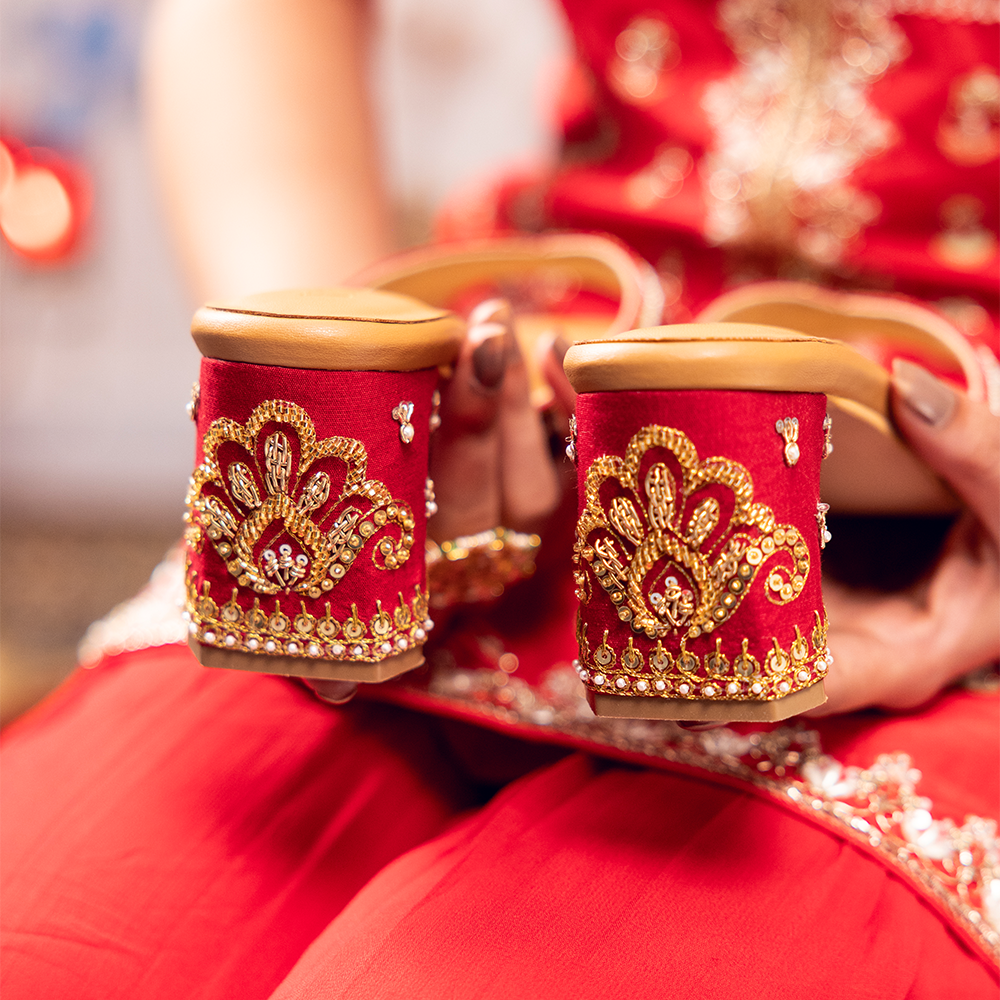Juttis are a type of traditional footwear that is popular in many regions of India, including Punjab. In Punjab, juttis are not just a fashion accessory but also a cultural symbol that represents the region's rich heritage and history.
Here are some ways in which juttis are associated with Punjab:
Historical Significance: Juttis have a long history in Punjab and are believed to have been worn by Punjabi farmers and artisans for centuries. The Punjabi jutti was originally a simple slip-on shoe made of leather or fabric and was worn by people of all ages and genders.
Traditional Attire: Juttis are an essential component of traditional Punjabi attire, including the popular dress of Punjab, the salwar kameez. The jutti is worn with both men's and women's attire and is often embroidered with intricate designs and patterns that reflect the region's vibrant culture.
Cultural Symbol: The Punjabi jutti is not just a piece of footwear but also a cultural symbol. It represents the region's rich heritage and history and is an important aspect of Punjabi culture. The embroidery and embellishments on juttis often feature elements such as flowers and animals reflecting the region's diverse cultural influences.
Fashion Accessory: Juttis have also become a popular fashion accessory in Punjab and many states of our country, they are worn with a variety of outfits, including jeans, skirts, and dresses. Many designers have incorporated modern and contemporary elements into the traditional design of juttis to make them more appealing to a wider audience.
Global Appeal: Juttis have gained a global appeal in recent years, and their popularity has spread beyond Punjab. They are now being worn by people all over the world as a fashion statement and a cultural symbol. Many fashion designers and celebrities have embraced juttis and have helped to increase their popularity and visibility.
Juttis are Representation of India
Juttis are a type of traditional Indian footwear that has been worn for centuries. These shoes are often intricately designed and handcrafted, featuring embroidery and embellishments that reflect India's rich cultural heritage. Juttis have become an iconic representation of India and are a symbol of the country's vibrant and diverse culture.
Here are some reasons why juttis are considered a representation of India:
Traditional Craftsmanship: Juttis are often handmade using traditional techniques and craftsmanship that have been passed down through generations. The intricate embroidery and embellishments on juttis reflect the rich cultural heritage of India and the skill and artistry of the artisans who create them.
Regional Diversity: Juttis are popular in different regions of India, and each region has its own unique style and design. For example, the juttis of Punjab are known for their bright colors and intricate embroidery, while the juttis of Rajasthan are often made from leather and feature delicate threadwork and beadwork.
Cultural Symbolism: Juttis are often adorned with traditional Indian motifs, such as flowers, peacocks, and paisley patterns. These motifs have cultural significance and reflect the diverse cultural influences that have shaped India over the centuries.
Global Appeal: Juttis have gained a global appeal in recent years and are now being worn by people all over the world. They have become a popular fashion accessory and are often incorporated into modern and contemporary designs, making them a representation of India's cultural heritage and its modern, global outlook.
Whether you're in India or anywhere else in the world, slipping on a pair of juttis can help you connect with the country's vibrant cultural traditions and express your appreciation for its unique cultural heritage.







